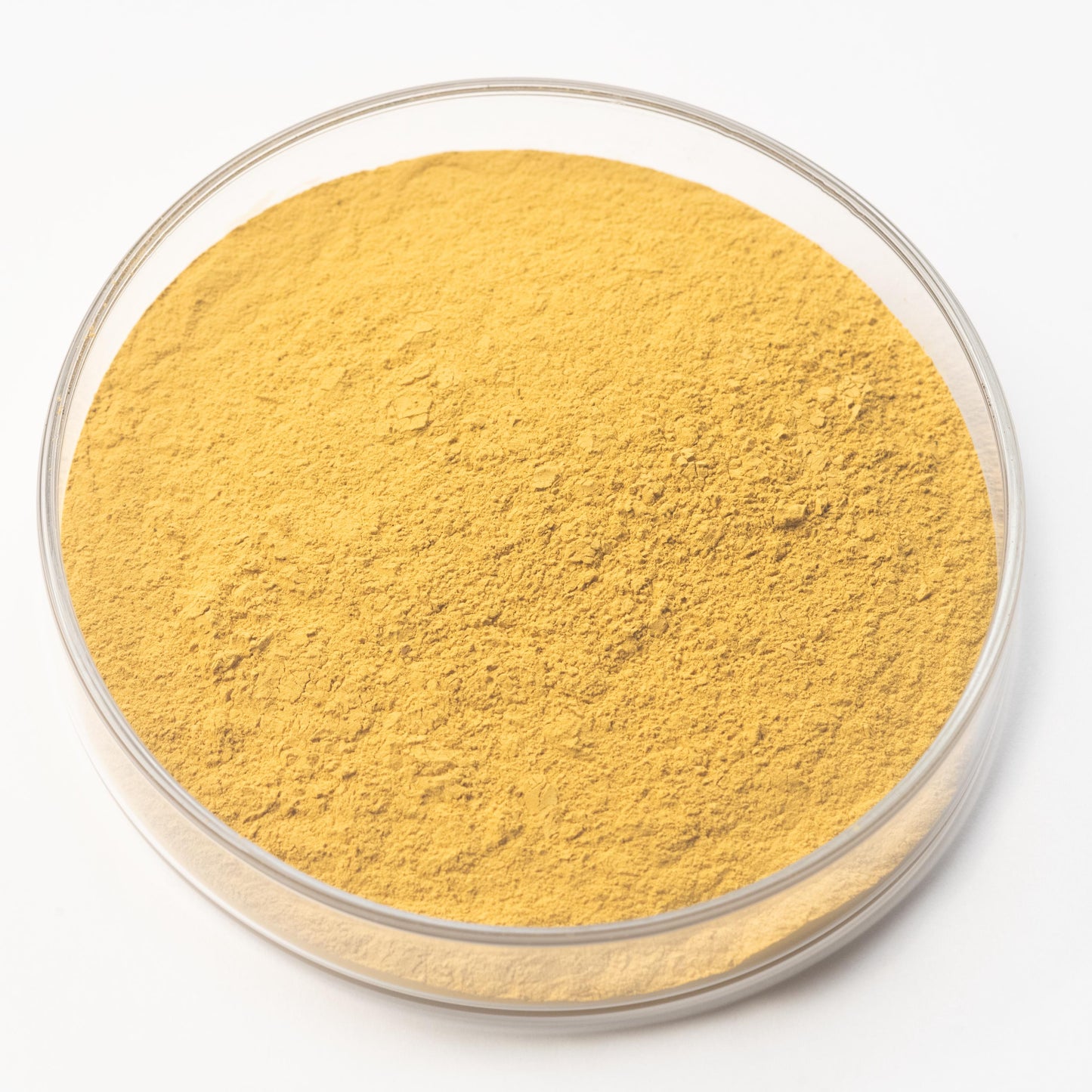Tin Vanadium Yellow
Tin Vanadium Yellow
Couldn't load pickup availability
Share

Description
Tin Vanadium Yellow (PY158) is a handmade single-pigment tin–vanadium yellow ceramic pigment. Built on a tin-oxide–based mineral matrix doped with vanadium, it forms an extremely stable, heat-resistant crystalline structure. It produces a soft to mid-range yellow with a gentle, slightly green-leaning undertone and a calm, sunlit masstone. Compared to high-chroma organic yellows, this color is more mineral and subdued, offering a natural, atmospheric yellow rather than an overpowering yellow.
In use, Tin Vanadium Yellow gives a controlled, versatile yellow ideal for foliage highlights, stone, architecture, florals, illuminated skies, and subtle light effects in landscape and figurative work. It has low to moderate tinting strength with a semi-opaque character, making it excellent for quiet tints, veil-like layers, and controlled lightening of other colors without pushing mixtures too bright. It mixes beautifully with blues for soft, natural greens, with earths for warm ochres and limestone-like neutrals, and with reds and violets for delicate, muted oranges and flesh tones that remain refined rather than brash.
This ceramic pigment is chemically inert, heat-resistant, and highly resistant to acids and alkalis, which makes it suitable across a wide range of binders and mediums. In artist’s colors it offers a dependable, low-chroma yellow that can function as a primary “quiet” yellow on the palette, a subtle alternative to more intense organic yellows, or a key mixer for palettes that favor nuance, atmosphere, and mineral character.
History
Tin–vanadium yellows were developed within the ceramic and industrial color industries as highly durable stains for glazes, enamels, and outdoor coatings. By introducing vanadium into a tin-based oxide lattice and firing at elevated temperatures, chemists created warm, slightly greenish yellows that could endure demanding kiln conditions and long-term weather exposure without fading or shifting.
Originally formulated for tiles, porcelain, sanitaryware, and architectural finishes, these pigments were valued for their stability at high temperature, excellent lightfastness, and resistance to chemicals and pollution. As interest in ceramic-origin pigments grew among artists and paintmakers, Tin Vanadium Yellow (PY158) began to appear in select artist ranges and handmade paints as a gentle, mineral alternative to brighter organic yellows. Today it is appreciated by painters who want a quiet, enduring yellow that harmonizes easily with both modern and historically inspired palettes.
Health and Safety
Precautions:
Keep out of reach of children and pets.
Do not consume.
Not for cosmetic or food usage.
Do not spray apply.
For further health information contact a poison control center.
Use care when handling dry pigments and avoid dust formation.
Use particular caution with fibrous, fine, or toxic pigments.
Do not eat, drink, or smoke near dry pigments.
Avoid breathing in pigment dust and use a NIOSH-certified dust respirator with sufficient rating for dry pigment.
Wash hands immediately after use or handling.
If dust is likely, always wear protective clothing to keep out of eyes, lungs, off skin, and out of any contact as well as keep area ventilated.
This product may contain chemicals known by the State of California to cause cancer, birth defects, or reproductive harm.
Warnings and bottle information are abbreviated.
Pigment Information
Pigment Type: Synthetic (Inorganic) tin–vanadium yellow ceramic pigment
Suitable Mediums: Watercolor, Oil, Tempera, Acrylic, Lime / Fresco, Ceramic and cement applications
Lightfastness: Best
Opacity: Semi-opaque
Other Names: Tin Vanadium Yellow, Tin–Vanadium Yellow, Ceramic Vanadium Yellow (PY158)
Color Index Code: PY158

